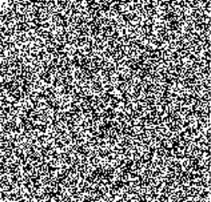Research themes in the Uchida Lab
(1) Fast physical random number generation using chaos in semiconductor lasers
~The world’s fastest dice~
1.Applications of random numbers
In the Uchida Laboratory, chaos is originated in semiconductor lasers to create the world’s fastest random number generators. Random numbers are classified in two categories: pseudo-random numbers and physical random numbers. Pseudo-random numbers are generated with algorithms at potentially high speed but have the shortcoming of showing periodicity and reproducibility. On the contrary, physical random numbers are based on physical phenomena and hence are free from these defaults, yet their generation speed is not so high. Random numbers are intensively used in applications dealing with signal encryption and high-scale simulations which require high generation rates for better efficiency. Our research focuses on proposing methods for fast physical random number generation based on the speed and complexity properties of laser chaos.
2.Generation of physical random numbers using chaos in semiconductor lasers
The principle of physical random number generation with laser chaos is described in Fig. 1. The output beam of the laser is reflected on an external mirror and directed back into the laser cavity as a feedback beam. This enables the laser output signal to exhibit chaos. This optical chaos signal is then converted into an electrical signal and the waveform is acquired with an oscilloscope. By sampling the temporal waveform and comparing the values of each sample to a defined threshold, sequences of zeros and ones are generated (Fig. 2).

Fig. 1 Physical random number generation using laser chaos

Fig. 2 Generated random numbers (ones and zeros are represented by white and black dots respectively
With this method, we managed to generate 1.7 billion bits in one second, which corresponds to a generation rate of speed of 1.7 Gbit/s [1]. By working on improving the chaos spectral bandwidth and on establishing a method to perform multi-bit generation, we are able to reach the high-speed generation rate of 1.2 Tb/s [2]. In parallel to chaos frequency bandwidth enhancement, optical heterodyne methods to improve physical random number generation speed and techniques for miniaturizing random number generators [3] constitute our main research topics.
- References
- [1] A. Uchida, et al., Nature Photonics, vol.2, pp.728 (2008).
- [2] R. Sakuraba, et al., Optics Express, Vol. 23, pp. 1470 (2015).
- [3] R. Takahashi, et al., Optics Express, Vol. 22, pp. 11727 (2014).
